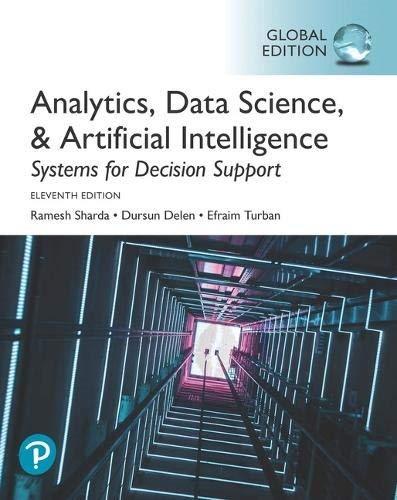Cosan is a Brazilbased conglomerate that operates globally. One of its major activities is to grow and
Question:
Cosan is a Brazilbased conglomerate that operates globally. One of its major activities is to grow and process sugar cane. Besides being a major source of sugar, sugar cane is now a major source of ethanol, a main ingredient in renewable energy. Because of the growing demand for renewable energy, ethanol production has become such a major activity for Cosan that it now operates two refineries in addition to 18 production plants, and of course, millions of hectares of sugar cane farms. According to recent data, it processed over 44 million tons of sugar cane, produced over 1.3 billion liters of ethanol, and produced 3.3 million tons of sugar. As one might imagine, operations of this scale lead to complex supply chains. So the logistics team was asked to make recommendations to the senior management to:
• Determine the optimum number of vehicles required in a fleet used to transport sugar cane to processing mills to preserve capital.
• Propose how to increase the actual capacity of sugar cane received at the sugar mills.
• Identify the production bottleneck problems to solve to improve the flow of sugar cane.
Methodology/Solution
The logistics team worked with Simio software and built a complex simulation model of the Cosan supply chain as it pertains to these issues.
According to a Simio brief, "Over the course of three months, newly hired engineers collected data in the field and received handson training and modeling assistance from Paragon Consulting of San Palo." To model agricultural operations to analyze the sugar cane's postharvest journey to production mills, the model objectives included details of the fleet of road transport sugar cane crop to Unity Costa Pinto, the actual capacity of reception of cane sugar mills, bottlenecks and points for improvement in the flow of CCT (cutloadhaul) of cane sugar, and so on.
The model parameters are as follows:
Input Variables: 32 Output Variables: 39 Auxiliary Variables: 92 Variable Entities: 8 Input Tables: 19 Simulated Days: 240 (1st season) Number of Entities: 12 (10 harvester compositional types for transport of sugar cane)
Results/Benefits
Analyses produced by these Simio models provided a good view of the risk of operation over the 240day period due to various uncertainties. By analyzing the various bottlenecks and ways to mitigate those scenarios, the company was able to make better decisions and save over $500,000 from this modeling effort alone.
Questions for Discussion
1. What type of supply chain disruptions might occur in moving the sugar cane from the field to the production plants to develop sugar and ethanol?
2. What types of advanced planning and prediction might be useful in mitigating such disruptions?
Step by Step Answer:

Analytics Data Science And Artificial Intelligence Systems For Decision Support
ISBN: 9781292341552
11th Global Edition
Authors: Ramesh Sharda, Dursun Delen, Efraim Turban





